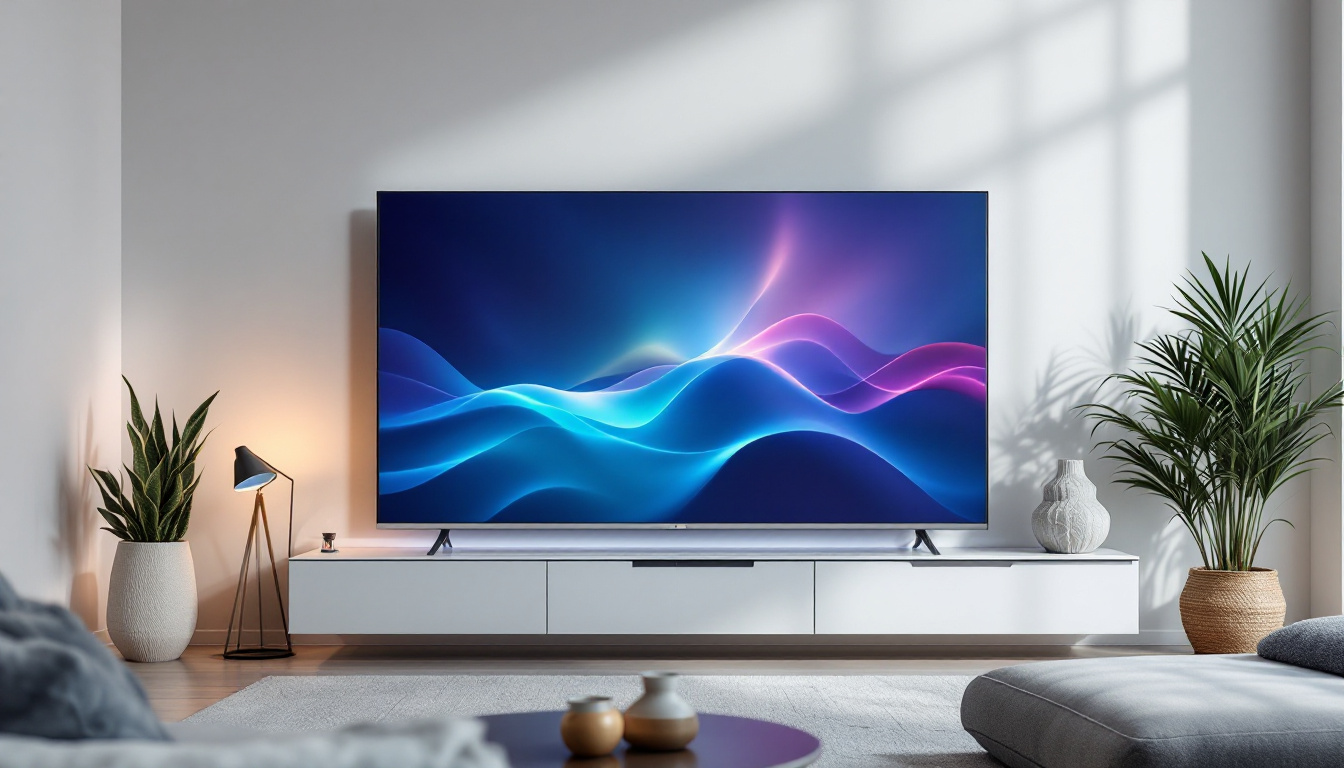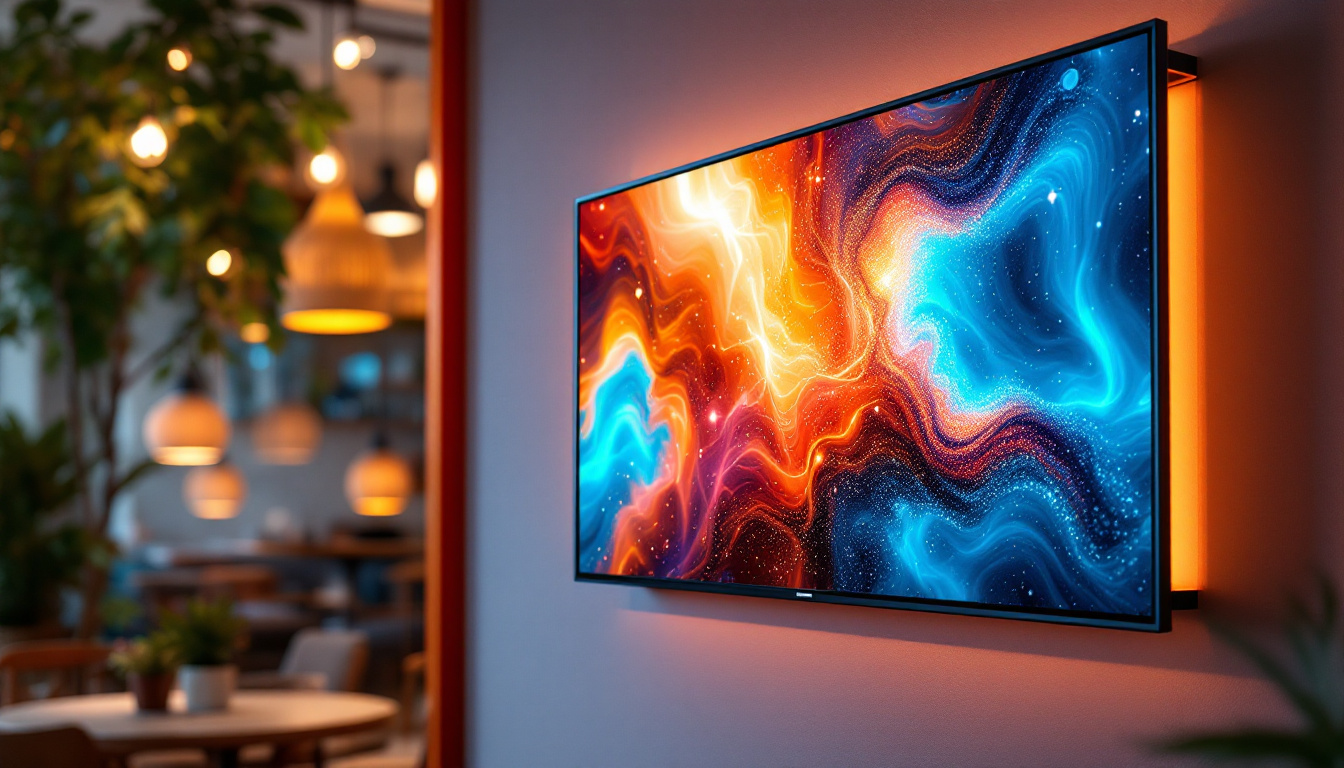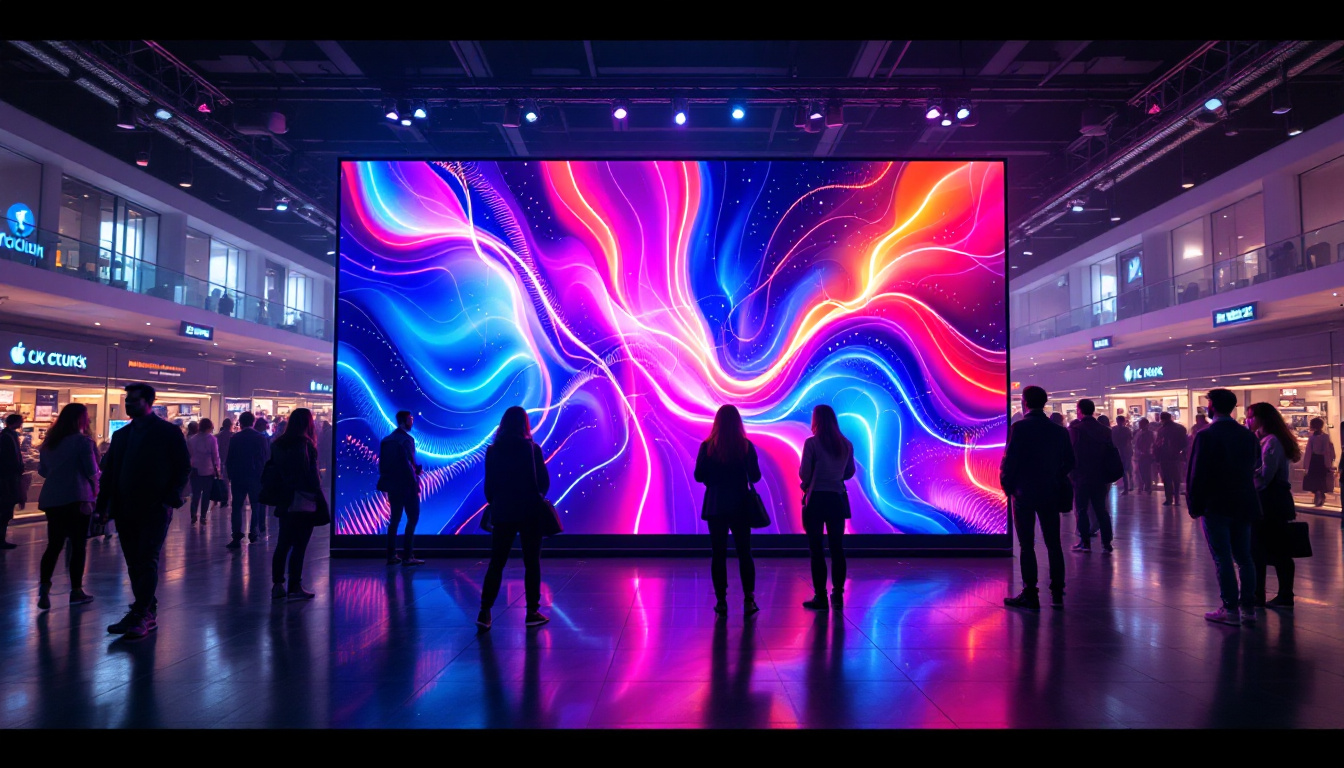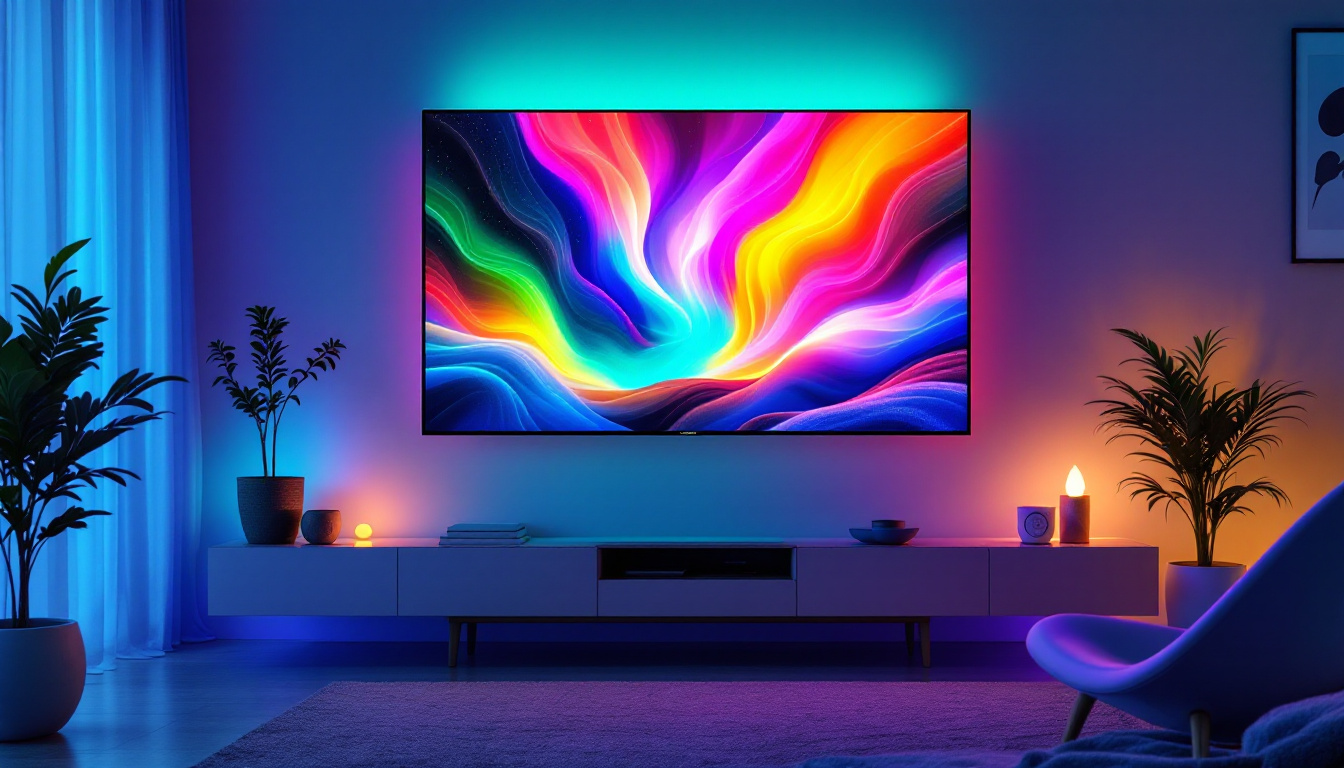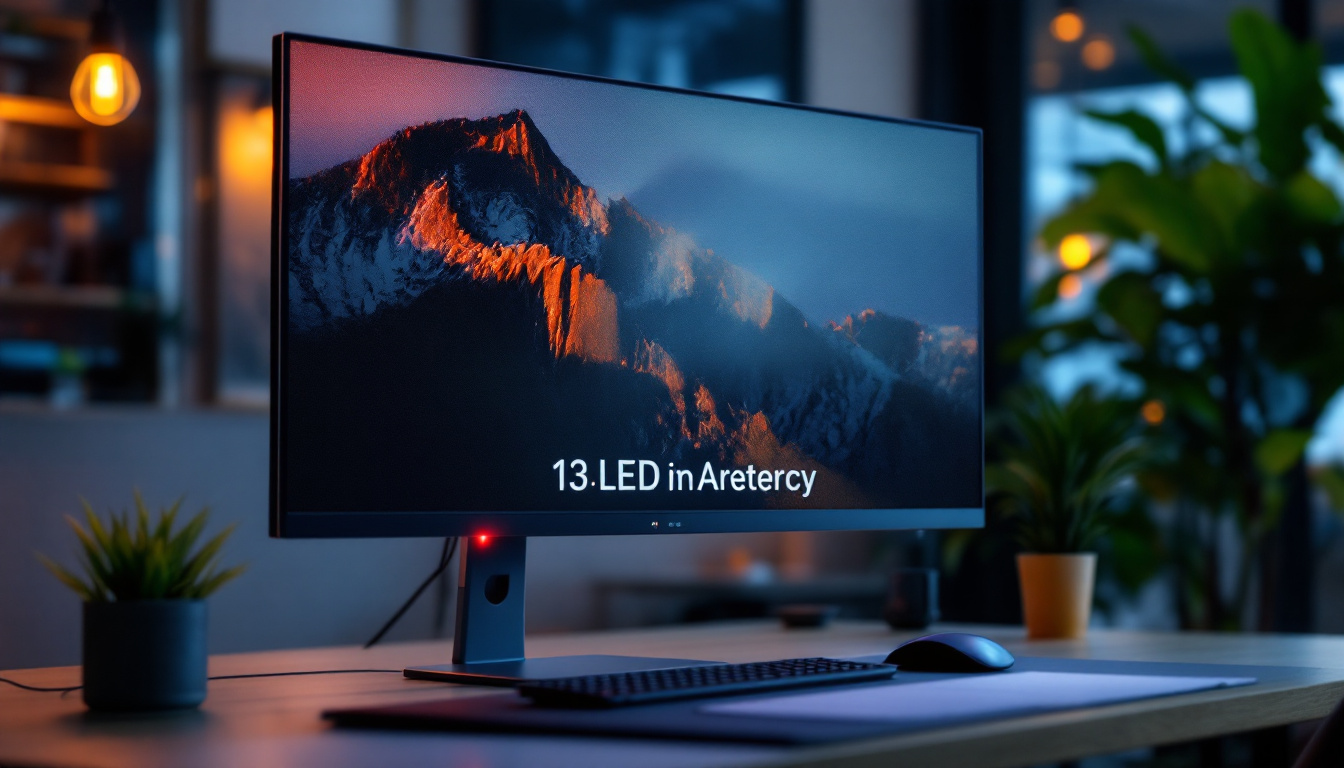In the ever-evolving world of technology, displays have become a crucial component in our daily lives. From smartphones to televisions, the quality of visual output can significantly enhance user experience. Among the various display technologies available, LED (Light Emitting Diode) and LCD (Liquid Crystal Display) are two of the most prominent. This article delves into the intricacies of LED displays, their advantages, and how they compare to traditional LCDs.
Understanding LED and LCD Technologies
Before diving into the specifics of LED displays, it is essential to understand the basic principles behind both LED and LCD technologies. While these terms are often used interchangeably, they refer to different aspects of display technology.
What is LCD?
Liquid Crystal Display (LCD) technology utilizes liquid crystals to modulate light. An LCD screen consists of several layers, including a backlight, polarizers, and liquid crystal cells. The backlight, typically fluorescent or LED, illuminates the liquid crystals, which then manipulate the light to create images. This technology is widely used in various devices, including monitors, televisions, and smartphones.
One of the primary advantages of LCDs is their ability to produce sharp images with high resolution. They are also energy-efficient compared to older technologies like cathode ray tubes (CRTs). However, traditional LCDs can struggle with color accuracy and contrast, particularly in darker scenes. Furthermore, advancements in LCD technology, such as the introduction of In-Plane Switching (IPS) panels, have significantly improved viewing angles and color reproduction, making them a popular choice for professional graphic design and photography applications. These enhancements have allowed LCDs to maintain relevance in a market increasingly dominated by newer technologies.
What is LED?
LED technology, on the other hand, refers specifically to the use of light-emitting diodes for illumination. In the context of displays, LED can be categorized into two types: edge-lit and backlit. Edge-lit LED displays use LEDs positioned along the edges of the screen, while backlit displays have a full array of LEDs behind the screen, providing more uniform lighting.
LED displays are known for their vibrant colors, deep blacks, and high contrast ratios. This is primarily due to the ability of LEDs to turn on and off quickly, allowing for better control over the light emitted. As a result, LED technology has gained popularity in recent years, especially in high-definition televisions and computer monitors. Additionally, the advent of OLED (Organic LED) technology, which utilizes organic compounds to emit light, has further pushed the boundaries of display capabilities, offering even greater color depth and flexibility in design. The thin profile of LED and OLED screens has also enabled manufacturers to create ultra-slim televisions and monitors, which are not only aesthetically pleasing but also save valuable space in modern living and working environments.
The Benefits of LED Displays
LED displays offer a myriad of advantages over traditional LCDs. Understanding these benefits can help consumers make informed decisions when purchasing a new monitor or television.
Enhanced Color Accuracy
One of the standout features of LED displays is their superior color accuracy. The use of LEDs allows for a broader color spectrum, enabling screens to produce more vibrant and lifelike images. This is particularly beneficial for graphic designers, photographers, and anyone who relies on precise color representation.
Moreover, LED technology supports advanced color formats such as HDR (High Dynamic Range), which enhances the viewing experience by providing greater detail in both bright and dark areas of an image. This capability makes LED displays ideal for watching movies and playing video games, where color depth plays a crucial role. The ability to see subtle gradients and rich textures can transform a mundane viewing experience into something truly immersive, allowing viewers to appreciate the artistry behind their favorite films and games.
Improved Energy Efficiency
Energy efficiency is another significant advantage of LED displays. Compared to traditional LCDs, LED monitors consume less power, which can lead to substantial savings on electricity bills over time. This is especially important for businesses that rely on multiple monitors, as the cumulative energy savings can be considerable.
Additionally, the lower energy consumption of LED displays contributes to a reduced carbon footprint, making them a more environmentally friendly choice. As sustainability becomes increasingly important in consumer choices, LED technology stands out as a responsible option. Many manufacturers are also focusing on eco-friendly production processes, ensuring that the entire lifecycle of the display, from creation to disposal, minimizes environmental impact. This commitment to sustainability not only appeals to environmentally conscious consumers but also aligns with global efforts to combat climate change.
Thinner and Lighter Designs
LED displays are also known for their sleek and modern designs. The compact nature of LED technology allows manufacturers to create thinner and lighter monitors, making them more aesthetically pleasing and easier to transport. This is particularly advantageous for professionals who need to move their equipment frequently, such as graphic designers and video editors.
Furthermore, the lightweight design of LED monitors can also enhance ergonomics, making it easier to mount them on walls or adjust their positioning on desks. The versatility in design means that LED displays can fit seamlessly into various environments, whether it’s a home office, a corporate setting, or a creative studio. Additionally, many LED displays come with features like ultra-thin bezels, maximizing screen real estate and providing a more immersive viewing experience. This trend towards minimalism not only looks good but also caters to the growing demand for multi-monitor setups, where aesthetics and functionality go hand in hand.
Comparing LED and Traditional LCD Displays
While LED displays offer numerous advantages, it is essential to compare them directly with traditional LCDs to understand their differences fully. This comparison can help consumers choose the right display technology for their needs.
Brightness and Contrast
One of the most significant differences between LED and traditional LCD displays is their brightness and contrast capabilities. LED displays tend to have higher brightness levels, making them more suitable for well-lit environments. This is particularly beneficial for users who work in bright offices or enjoy watching movies during the day.
In terms of contrast, LED displays excel due to their ability to produce deeper blacks. Traditional LCDs often struggle with black levels, resulting in a grayish appearance in dark scenes. This contrast advantage makes LED displays a preferred choice for movie enthusiasts and gamers who seek an immersive experience.
Response Time and Refresh Rate
Response time and refresh rate are critical factors for gaming and fast-paced video content. LED displays typically offer faster response times compared to traditional LCDs, which can reduce motion blur and ghosting effects during fast action sequences. This feature is particularly appealing to gamers who require quick and precise visuals for competitive play.
Additionally, many LED monitors support higher refresh rates, allowing for smoother motion and improved overall performance. This capability can enhance the gaming experience, making LED displays a popular choice among avid gamers.
Price Considerations
When it comes to pricing, traditional LCDs are often more affordable than their LED counterparts. This price difference can be attributed to the manufacturing costs associated with LED technology. However, as LED technology continues to advance and become more mainstream, the price gap is gradually narrowing.
For consumers on a budget, traditional LCDs may still represent a viable option, especially for basic tasks such as web browsing and office work. However, for those seeking superior performance and visual quality, investing in an LED display may be worthwhile in the long run.
Choosing the Right Monitor for Your Needs
With the plethora of monitor options available, selecting the right one can be a daunting task. Understanding individual needs and preferences is crucial in making an informed decision.
Consider Your Usage
The first step in choosing a monitor is to consider how it will be used. For general office work, a standard LCD monitor may suffice. However, for graphic design, video editing, or gaming, investing in an LED display is advisable due to its superior color accuracy and response time.
Additionally, consider the size of the monitor. Larger screens can enhance productivity by allowing for multiple windows to be open simultaneously, while smaller screens may be more suitable for limited desk space.
Evaluate Connectivity Options
Connectivity is another essential factor to consider when purchasing a monitor. Ensure that the monitor has the necessary ports to connect to your devices, such as HDMI, DisplayPort, or USB-C. Compatibility with your computer or gaming console is crucial for optimal performance.
Furthermore, some monitors come with additional features such as built-in speakers or USB hubs, which can add convenience and reduce clutter on your desk.
Read Reviews and Seek Recommendations
Before making a final decision, it is advisable to read reviews and seek recommendations from trusted sources. User experiences can provide valuable insights into the performance and reliability of specific monitor models.
Online forums, technology websites, and customer reviews can offer a wealth of information, helping potential buyers make informed choices based on real-world experiences.
Conclusion
In conclusion, the choice between LED and traditional LCD displays ultimately depends on individual needs and preferences. LED displays offer numerous advantages, including enhanced color accuracy, improved energy efficiency, and superior performance in terms of brightness and contrast. However, traditional LCDs may still serve as a cost-effective option for basic tasks.
As technology continues to advance, LED displays are likely to become more accessible and affordable, making them an increasingly popular choice for consumers. By understanding the differences between these technologies and considering personal usage requirements, individuals can make informed decisions that enhance their visual experience.
Ultimately, whether opting for an LED or traditional LCD monitor, the right display can significantly impact productivity, entertainment, and overall satisfaction in today’s visually-driven world.
Discover LumenMatrix’s Advanced LED Display Solutions
As you consider the benefits of LED displays for your personal or professional needs, LumenMatrix invites you to explore a world of innovative LED display technology. With a commitment to excellence and a wide array of solutions including Indoor and Outdoor LED Wall Displays, Vehicle LED Displays, and specialized options like LED Sports and Floor Displays, LumenMatrix is at the forefront of creating immersive visual experiences. Whether you’re looking to enhance brand visibility or captivate your audience, our cutting-edge LED display modules are designed to meet the highest standards of color accuracy, energy efficiency, and performance. Check out LumenMatrix LED Display Solutions today and see how we can transform your visual communication.






